Table of content
Passion fruit, scientifically known as Passiflora edulis, is a tropical delight celebrated for its vibrant flavor, aromatic seeds, and versatile culinary applications. Whether you’ve harvested a bumper crop from your garden, scored a bulk deal at the market, or received a generous gift from a tropical-vacationing friend, preserving this exotic fruit correctly is essential to savor its tangy-sweet taste for weeks or even months. This comprehensive guide delves into the science and practicality of storing passion fruit, ensuring you maximize its shelf life without compromising its nutritional value or culinary appeal.
Understanding Passion Fruit: A Brief Overview
Before diving into storage techniques, it’s crucial to grasp the fruit’s biology. Passion fruit grows on vigorous, climbing vines native to South America but now cultivated in tropical and subtropical regions worldwide. Its thick, waxy rind encases a jelly-like pulp filled with crunchy, edible seeds. The fruit’s ripeness stage significantly impacts storage decisions: unripe passion fruit is firm and green (or purple, depending on the variety), while ripe specimens develop a wrinkled, deeply colored rind and yield slightly to pressure.
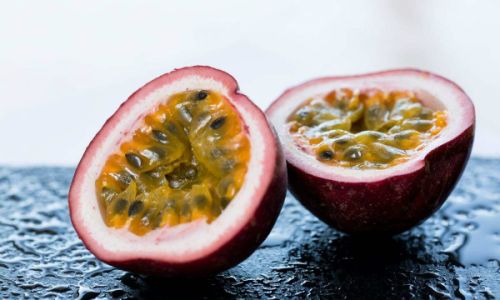
Why Proper Storage Matters
Passion fruit’s high moisture content (approximately 73%) and delicate rind make it prone to spoilage if mishandled. Improper storage can lead to:
- Mold growth: Fungal spores thrive in damp environments.
- Dehydration: Overly dry conditions shrivel the rind and dry out the pulp.
- Premature ripening or rotting: Ethylene gas produced by the fruit accelerates decay if not managed.
By adhering to proven preservation methods, you can extend the fruit’s lifespan, reduce waste, and enjoy its tropical essence in smoothies, desserts, sauces, and beverages long after harvest.
Storing Unripe Passion Fruit: Ripening at Room Temperature
If your passion fruit is underripe (firm, green/purple, and lacking wrinkles), room-temperature storage is ideal. Here’s how to optimize this phase:
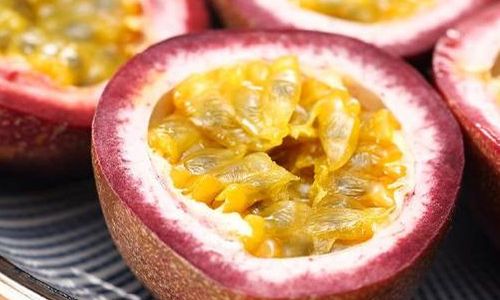
Temperature and Humidity Control
- Ideal conditions: Store unripe fruit at 68–77°F (20–25°C) with 60–70% humidity. Avoid direct sunlight, which can cause uneven ripening.
- Avoid refrigeration: Cold temperatures below 50°F (10°C) halt ripening and may lead to chilling injury, causing the rind to blacken and the pulp to ferment.
Ripening Techniques
- Grouping: Place passion fruit in a paper bag with ethylene-producing fruits like bananas, apples, or avocados. Ethylene gas accelerates ripening.
- Ventilation: Ensure the bag isn’t sealed tightly to prevent moisture buildup. Puncture holes if necessary.
- Check daily: Gently press the rind; it should give slightly when ripe. Overripe fruit may develop a fermented aroma.
Shelf Life
- Unripe passion fruit stored correctly will ripen in 3–7 days, depending on initial maturity.
Storing Ripe Passion Fruit: Refrigeration Basics
Once ripe (wrinkled, fragrant, and slightly soft), passion fruit requires cooler temperatures to slow deterioration.
Refrigerator Setup
- Temperature: Maintain 40–45°F (4–7°C). Use the crisper drawer for optimal humidity control.
- Container: Place fruit in a breathable mesh bag or perforated plastic container to prevent moisture accumulation. Avoid airtight containers, which promote mold.
Handling Ripe Fruit
- Do not wash before storage: Excess moisture accelerates spoilage. Rinse just before use.
- Inspect regularly: Remove any moldy or overly soft specimens to prevent contamination.
Shelf Life
- Ripe passion fruit lasts 10–14 days in the refrigerator. The rind may continue to wrinkle, but the pulp remains usable until discoloration or off-odors develop.
Freezing Passion Fruit: A Game Changer for Long-Term Storage
Freezing is the gold standard for preserving passion fruit’s flavor and texture for months. Three primary methods cater to different needs:
Freezing Whole Fruit
- Steps:
- Wash and dry ripe passion fruit.
- Place in a single layer on a baking sheet lined with parchment paper.
- Freeze for 2–3 hours until solid.
- Transfer to airtight freezer bags or containers, removing excess air.
- Pros: Retains shape for decorative purposes.
- Cons: Thawing may soften the rind, making pulp extraction messy.
Freezing Pulp Puree
- Steps:
- Halve ripe fruit and scoop out the pulp.
- Strain through a sieve to remove seeds (optional).
- Mix with 1–2 tablespoons of lemon juice per cup of pulp to prevent browning.
- Pour into ice cube trays or freezer-safe jars.
- Pros: Easy portion control; ideal for smoothies and sauces.
- Shelf life: 8–12 months.
Freezing Seeds and Pulp Separately
- Steps:
- Extract pulp and seeds.
- Rinse seeds under cold water to remove pulp.
- Dry seeds thoroughly on a paper towel.
- Freeze seeds and pulp in separate containers.
- Pros: Preserves seeds’ crunch for garnishes.
Dehydrating Passion Fruit: A Shelf-Stable Alternative
Dehydration removes moisture, creating lightweight, concentrated fruit pieces perfect for snacks or powders.
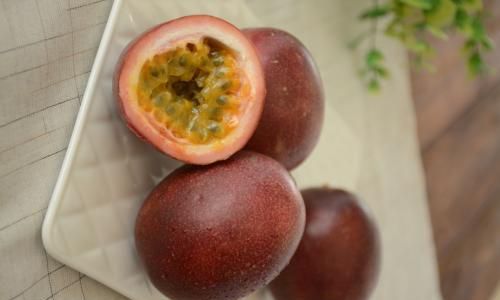
Oven Dehydration
- Steps:
- Preheat oven to 135–145°F (57–63°C).
- Halve fruit and scoop pulp.
- Spread pulp ½-inch thick on parchment-lined trays.
- Dry for 8–12 hours, stirring hourly.
- Pros: No special equipment needed.
- Cons: Time-consuming; texture may vary.
Using a Food Dehydrator
- Steps:
- Set dehydrator to 125°F (52°C).
- Spread pulp on trays and dry for 6–8 hours.
- Pros: Consistent results; retains more nutrients.
Storage:
- Store dehydrated pulp in airtight jars in a cool, dark place. It lasts 6–12 months.
Creative Storage Solutions: Juices, Syrups, and More
Beyond basic preservation, transform passion fruit into value-added products:
Passion Fruit Juice Concentrate
- Method:
- Simmer pulp with equal parts water and sugar for 15 minutes.
- Strain and bottle while hot.
- Refrigerate for up to 3 weeks or freeze in cubes.
Infused Syrups
- Method:
- Combine 1:1 ratio of sugar and passion fruit juice.
- Simmer until thickened.
- Store in sterilized bottles for 3–4 months.
Passion Fruit Powder
- Method:
- Dehydrate pulp completely.
- Blend into a fine powder.
- Use in smoothies, yogurts, or baking.
Avoiding Common Pitfalls: Mistakes to Dodge
- Washing Before Storage: Moisture invites mold. Clean fruit only before use.
- Overcrowding Containers: Poor airflow hastens spoilage.
- Ignoring Spoilage Signs: Discard fruit with fuzzy mold, oozing liquid, or off-putting odors.
- Thawing and Refreezing: This degrades texture and flavor.
Nutritional Retention: Does Storage Affect Benefits?
Passion fruit is a powerhouse of vitamin C, fiber, and antioxidants. Proper storage minimizes nutrient loss:
- Refrigeration: Retains 90% of vitamin C for 2 weeks.
- Freezing: Preserves 80% of nutrients for 6 months.
- Dehydration: Concentrates antioxidants but reduces vitamin C by 30–40%.
Conclusion: Enjoy Passion Fruit Year-Round
Mastering passion fruit storage unlocks endless culinary possibilities. Whether you opt for refrigeration, freezing, or dehydration, the key lies in understanding the fruit’s ripeness stage and adapting techniques accordingly. By avoiding common errors and leveraging creative preservation methods, you can transform this tropical gem into a pantry staple, ensuring its vibrant flavor brightens dishes even in the dead of winter.
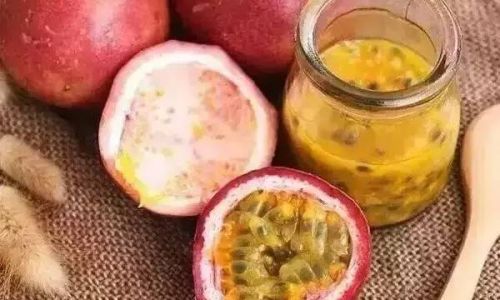
So, the next time you find yourself with a surplus of passion fruit, remember: a little storage science goes a long way in preserving nature’s zesty bounty.
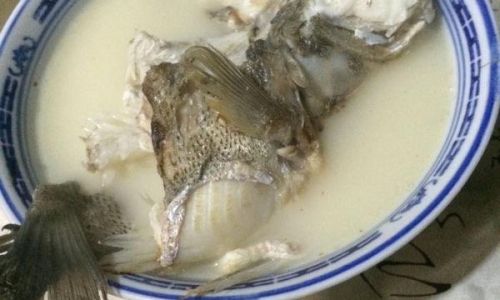

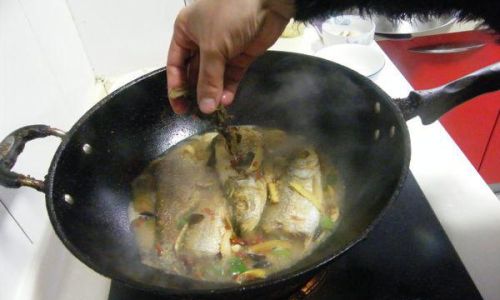

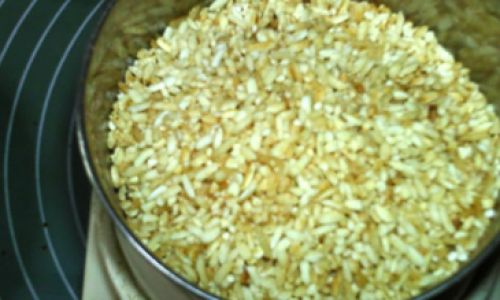

0 comments